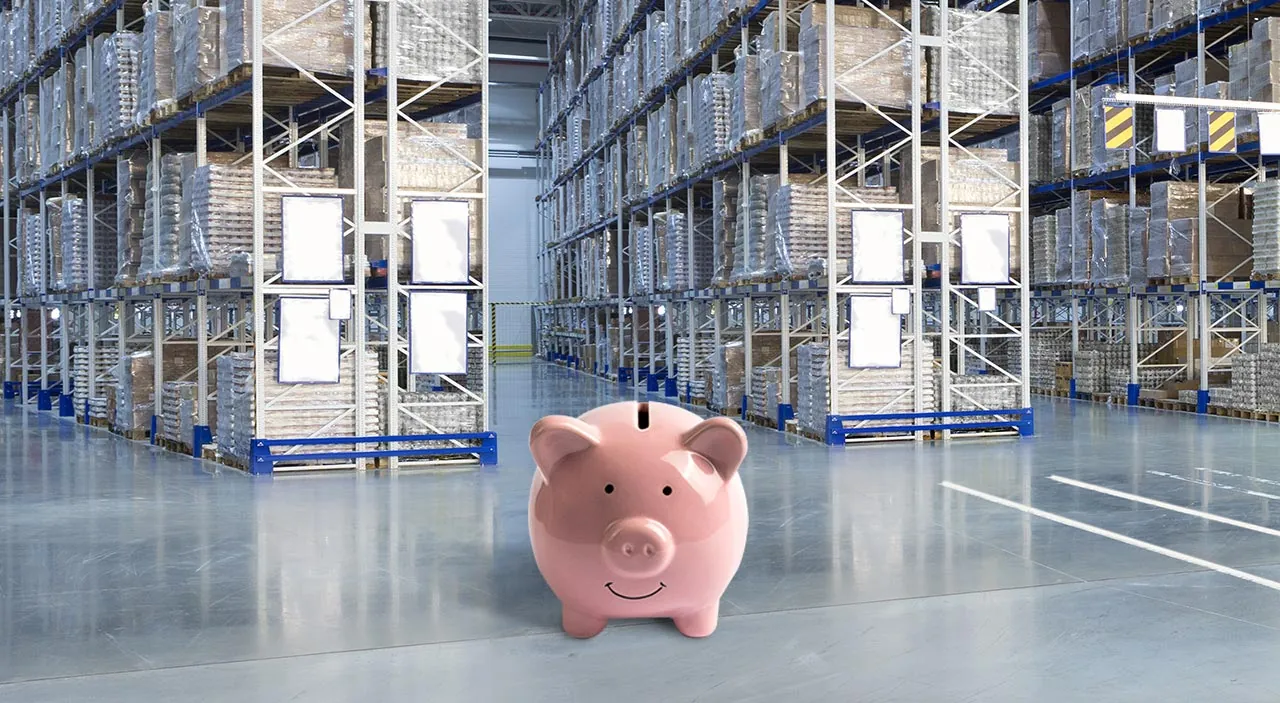
How to Calculate the Cost of Freight Shipping
At FreightCenter, we handle all your shipping needs.
To calculate the cost of freight shipping varies depending on a few factors. At first, it might seem overwhelming, but once you understand what goes into it, it’s actually pretty simple. Let’s take a look at the factors, break down how to get a quote, and help you calculate the best rate for your shipment.
Should I Choose FTL or LTL?
When it comes to freight shipping, there are two basic categories – full truckload (FTL) and less-than-load (LTL). The primary difference between the two options is whether or not the shipper is paying for the entire truck space or just a partial portion.
Full truckload shipping is what it sounds like – one shipper rents space in an entire truck to ship their load. This could mean that the shipper either has enough items to fill an entire truckload or they have a partial truckload (PTL) but prefer to use a single, dedicated truck. FTL shipping is typically ideal when businesses have 10 pallets or more to ship or when they have fragile packages that they want to be shipped alone.
We provide competitive freight shipping prices and an all-inclusive, easy-to-use shipping experience for our customers. Exceeding our customers’ expectations results in thousands of satisfied customer reviews and repeat business. We believe in the power of our customer relationships. Check out FreightCenter reviews from real customers, and learn what they have to say about their freight shipping experience!
- 2021 Food Logistics’ Top Green Providers
- 2021 & 2018 Supply & Demand Chain Executives' Pros to Know: Matthew Brosious
- 2020 & 2019 Top Food Logistics’ 3PL & Cold Storage Provider Award
- 2020 & 2019 Business Observer’s Top 500 Companies on the Gulf Coast
- 2020 & 2017 SmartWay® Transport Partner
- 2020 & 2017 Food Logistics’ Champions: Rock Stars of the Supply Chain
- 2020 Best of Palm Harbor Awards for Local Businesses
- 2017 Green Supply Chain Award from Supply & Demand Chain Executive
- 2017 Tampa Bay Business Journal Heroes at Work
- 2016, 2015, & 2012 Food Logistics Top 100 Software and Technology Providers
- 2013 Tampa Bay Business 100 by Tampa Bay Business Journal
- 2013 Top 100 Great Supply Chain Partners by SupplyChainBrain
- 2012 TIA Samaritan Award Honorable Mention

Why Ship With FreightCenter?
- Wide Range of Services: FreightCenter offers many shipping services for your convenience, including LTL (Less Than Truckload), truckload, intermodal, and international services.
- Technology Integration: FreightCenter provides a user-friendly platform for comparing rates, booking shipments, and tracking deliveries. This technology makes your shipping process more efficient and transparent.
- Tailored Solutions: FreightCenter offers solutions tailored to meet any business’s specific requirements and unique needs.
- Budget Efficiency: With their vast network of carriers and experience, shipping with FreightCenter helps you save money on shipping expenses.
Benefits of Full Truckload (FTL)
- Shipment remains in the same truck from point A to point B
- Faster than LTL shipping (by a long shot)
- Ideal for fragile items or those that need special handling (such as frozen foods or fresh produce, for example)
If an FTL shipment sounds like the best fit for you, contact a shipping specialist now by calling 800.716.7608 to review your options.
On the other hand, less-than-truckload shipping combines shipments from multiple customers into one truckload. It is a more budget-friendly option than renting the space of the entire truck because each shipper only pays for the space that his or her load occupies within the space.
LTL shipments typically make frequent stops and unload and re-load goods. Sometimes logistics companies will try to add your shipment to a regularly scheduled route that’s heading in the same direction to save the shipper money. FreightCenter typically works to select a carrier that takes regularly scheduled routes between carrier hubs.
Benefits of Less-than-Load (LTL)
- More budget-friendly than FTL
- Ideal for small businesses
- Generally delivered in the mornings, with pickups typically occurring in the afternoon and at night
- The most popular way to ship
To create value for our customers by delivering customized shipping solutions that meet their unique needs and to fulfill shipping demands from simple to complex with expertise, guidance and ingenuity.
LTL is when many small shipments from different customers are put together onto one truck, which splits the shipping expenses. Rely on FreightCenter's expertise to secure competitive rates and extensive options tailored to your LTL freight shipping requirements
Truckload shipping means using a whole truck trailer to move freight. Unlike Less Than Truckload (LTL) shipping, with FTL, you can move big and heavy items that otherwise would not fit in an LTL shipment. If the item weighs over 20,000 pounds or is more than 12 feet long, 8 feet wide, and 8 feet high, FTL is the right option for you. FreightCenter offers full and partial truckload options and fair prices for different kinds of freight, including dry van, flatbed, and refrigerated freight.
FreightCenter's nationwide Expedited Trucking services ensures the secure transportation of your freight. Whenever time is of the essence, you can count on our team of shipping experts to accelerate your delivery, no matter the size.
Specialized Freight is suitable for items that require special handling, specific equipment, or shipping conditions. Those shipments include high-value, oversized, or temperature-sensitive freight. With just a few clicks, discover the most reliable rates for Specialized Freight Services offered by leading carriers.
Also known as Refrigerated freight, it pertains to cargo that require precise-temperature-controlled conditions. They are transported on refrigerated trucks also called reefer trucks. They maintain the cargo fresh ad preserved. With our services, your freight will reach its destination in flawless condition, free from any spoilage or damage
White Glove service means that drivers must be extra careful when handling and transporting cargo. This helps make sure that your shipment is delivered safely and securely without you having to do any heavy lifting or extra work.
International shipping refers to the transportation of goods across borders to other countries. Freight can shipped through land and sea routes.
Containerization enables shipping firms to transport sea cargo containers without ever needing to handle the cargo contents directly. This significantly decreases the risk of damage or loss during transit. Sea cargo containers are seamlessly transferred onto rail carts or trucks, ensuring swift and efficient delivery to their destinations.


Calculate Freight Shipping Class
Four factors determine a shipment’s freight class: density, stowability, handling, and liability. To help categorize shipments, the National Motor Freight Traffic Association publishes the National Motor Freight Classification (NMFC), a tool that helps determine freight class for shipments.
There are 18 total freight classes that are represented by numbers ranging from 50 to 500.
(insert Freight Class Chart – be sure to include alt tag – “freight class chart”)
Density
Density is the primary factor that affects a shipment’s freight class. This refers to the pounds per cubic foot that we calculated in the section above. Generally, items that have a higher density fall into a lower freight class, meaning they have a lower cost.
Stowabiity
Stowability refers to how easy it is to stow the item that you are shipping. For example, items that are in an unusual shape, like a kayak or piano, are more difficult to stow than an item that is in the shape of a box. Additionally, shipments that contain hazardous materials may not be able to travel alongside other items. Basically, the more difficult it is to stow an item, the higher the shipping cost will be.
Handling
Handling is another important factor to consider when determining shipping costs. As mentioned earlier, LTL shipments are frequently unloaded and reloaded at various stops, making each shipment’s handleability an important factor. The greater the difficulty in handling, the higher the shipping cost will be for the shipment.
Liability
Items that are more likely to be damaged, stolen, or hazardous to other freight shipments are going to have a higher shipping cost than those that do not come with the same risk.
Get a Quote using our Quick Quote Tool
Have questions about how these factors will determine your shipment’s cost? Call 800.716.7608 to speak with one of our shipping experts today, who will be happy to guide you through the process or get a quote.
FAQ: How To Calculate The Cost of Freight Shipping
Q. What documents are required when calculating the cost of freight shipping?
The Bill of Lading (BOL) serves as a receipt for your shipment and a contract between you and the carrier.
Q. What factors influence the cost of freight shipping?
The cost of freight shipping is influenced by weight, dimensions, distance, mode of transportation, type of freight, and/or additional services.
Q. Can I get an instant quote with FreightCenter?
Yes, you can always get a quote directly through FreightCenter by entering the details of your shipment into the online quote tool.
Q. How can I estimate the cost of freight shipping?
With FreightCenter you can get an estimate based on the details of your shipment.
Advantages of Using FreightCenter

Expertise
FreightCenter can provide guidance and support throughout the shipping process and help navigate challenges that may arise.

Convenience
FreightCenter offers a centralized platform for users to easily compare rates and book shipments from multiple expert carriers, saving time and effort.

Cost Savings
FreightCenter helps users find the most cost-effective solutions by having access to competitive rate from different carriers.

